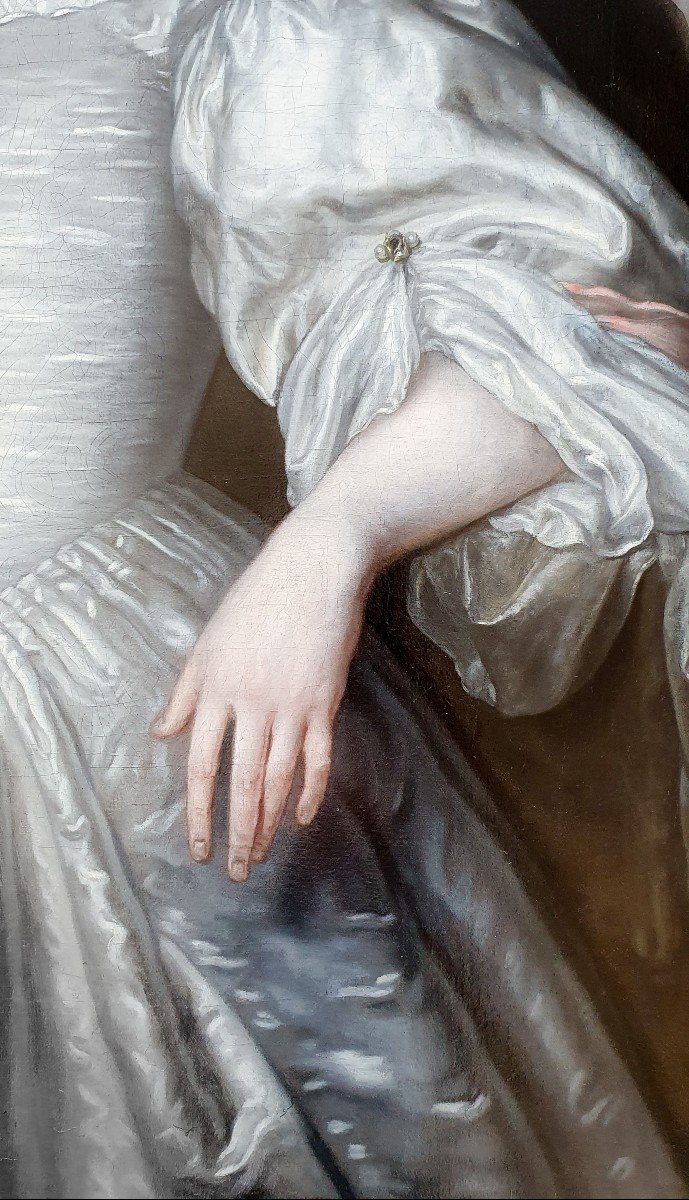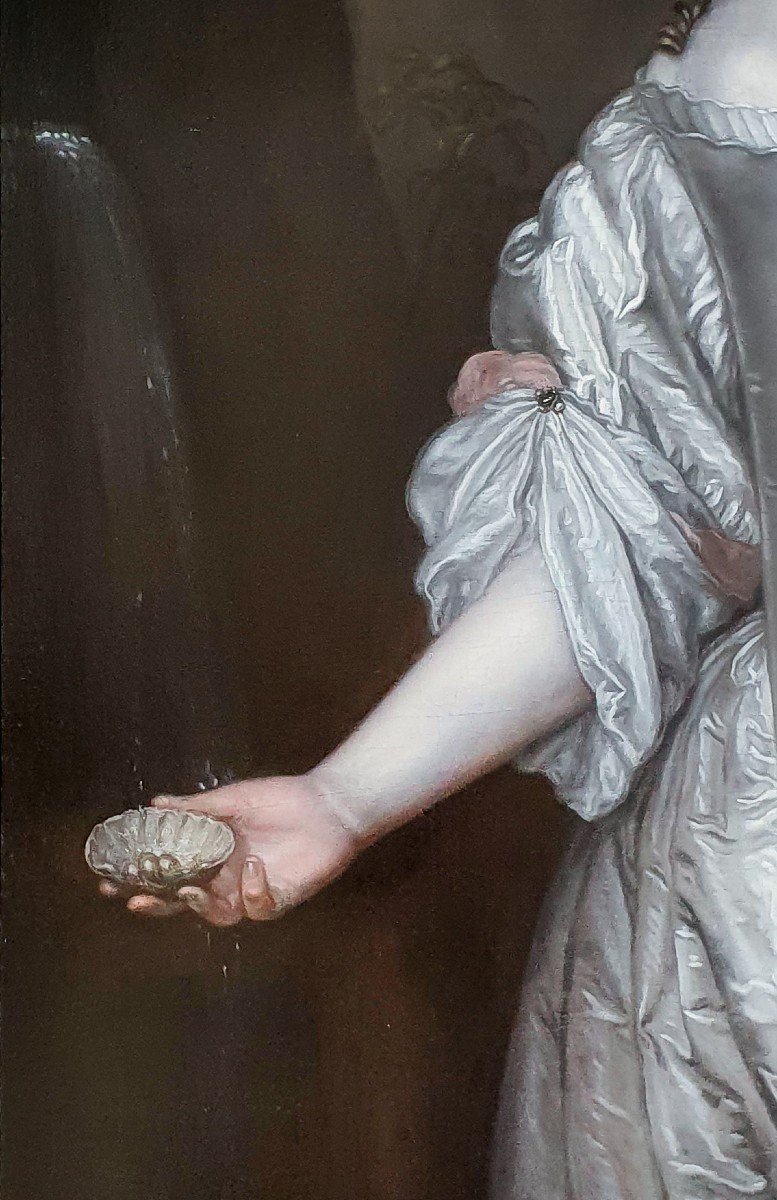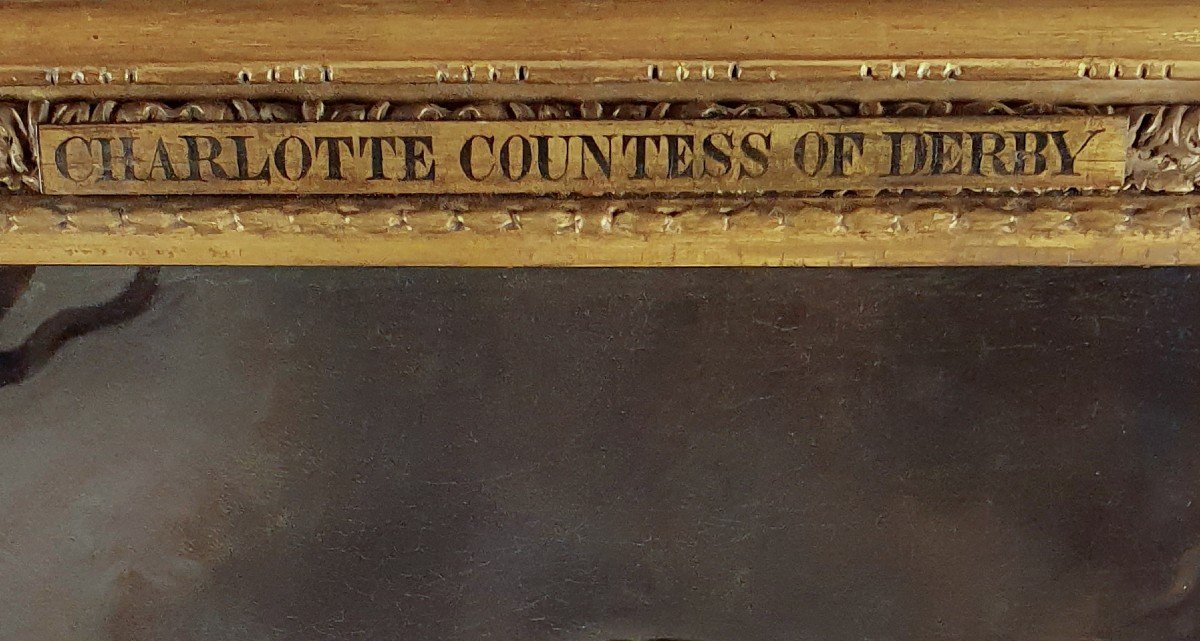"Portrait Of Charlotte Stanley, Countess Of Derby (1599-1664) C.1648, Signed "
Portrait of Charlotte Stanley, Countess of Derby (1599-1664) c.1648Signed by J. de Langhe (active 1674-1693)
This magnificent large-scale portrait is a fine example of the Baroque portrait style in the middle of the 17th century. Beautifully composed the sitter is half length and standing before a rocky outcrop and beside a fountain, perhaps within the family estate. The dress is from the finest material, and it has full, loose sleeves ending just below the elbow and a long-pointed bodice. This, along with the hairstyle pulled back and with set corkscrew locks and short ones framing the face, was fashionable in the 1650s. The accessory par excellence – pearls – are worn around the neck and in the hair and were a very popular and expensive accessory. In 1665 the diarist Samuel Pepys accounted the purchase of a pearl necklace for his wife which in today money is over £10,000: “She was also to look after a necklace of pearl, which she is mighty busy about, I being contented to lay out 80 pounds in one for her”.
The sitter is holding a shell into which water pours. This compositional devise was often used at the time and it may make an appropriate allusion to her potential as wife and mother, recalling Proverbs, Chapter 5, Verse 18: “Let thye fountain be blessed, and rejoice in the wife of thye youth”. Although it did not always have a hidden meaning and was sometimes simply an embellishment.
Traditionally, the painting has been thought to represent Charlotte Stanley, Countess of Derby (1599-1664). Born Charlotte de La Trémoille, she was from one of France's oldest and most powerful families, and she was also a legendary figure during the English Civil War. Her father was Claude de la Trémoille, Duke of Thouars (France) and her grandfather was William I, Prince of Orange. Her mother came to England in 1625 as part of the Royal household of Queen Henrietta Maria, Charles I's queen. During this visit she arranged a marriage between Charlotte and James Stanley, 7th Earl of Derby. The marriage took place in 1626 and for 16 years she lived quietly with her husband at Knowsley or Lathom House giving birth to nine children. Her husband fought during the civil war and was eventually captured in 1651 and beheaded. When Lathom House was the last remaining Royalist stronghold in Lancashire, the Countess who was in charge of its defence, gallantly held out without surrender, famously declaring that she and her children would perish in the flames rather than yield. Eventually she moved to Knowsley, where she died. For some historians, the fall of the famous royalist house marked an important event for the Parliamentary cause and an order was issued by the House of Commons "for the ministers about London to give public thanks to God, on the next Lord's Day, for its surrender". After the Restoration the property was returned to the Derby family. It worth noting that Charlotte Stanley was depicted at different stages of her life (see Van Dyke, Cornelius Johnson, Sir Peter Lely…) but the physiognomy in these images varies considerably.
The remarkable skill of the artist is evident. The rendering of the face with the subtitle nuances, the depiction of the curls of hair, the treatment of the fabrics, and the utterly beautiful modelling of the hands – this portrait is on a level with some of the best portraits of the period. The painting is signed “J de Langhe fec” – the artist was active in Holland from 1674 to 1693 and was probably Jacobus de Langhe who was buried in Amsterdam 26th December 1696. There are at least eight known portraits in extant - all show a remarkable skill in the drawing, colouring and the rendering of flesh and fabrics. Examples are of the Dutch royal family are in the City Hall in 's-Hertogenbosch, Holland.
How could such a talented portrait artist remain relatively unknown today? Of the legions of Dutch artist’s working in the seventeenth century little detail is known of many despite their extreme activity in the art market and the fact that some were very skilled painters. The answer to this is complicated and of the many reasons we must acknowledge that in-depth biographical studies are yet to be carried out on the vast number of artists working in Holland at the time. Considering, by some accounts, more than 1.3 million Dutch pictures were painted between 1640 and 1660 alone it is not surprising that today we know nothing or relatively little about many of the artists. The economic depression that held the Republic of the United Netherlands in its grip from 1660 onwards slashed the purchasing power of large segments of the population to such an extent that the huge demand for paintings totally evaporated and with it, undoubtedly, over time, the identities and biographical information of many of these artists. When a study is eventually carried out it can elevate that artist exponentially - Johannes Vermeer ranks among the most admired of all Dutch artists today was relatively obscure until the end of the nineteenth century. Many other highly desirable seventeenth century artists today were only “rediscovered” during the 19th century.
We are very pleased to offer this signed work of which examples by this talented artist are rarely available.
Presented in a good quality and condition period gilded frame with presentation plaque.
Provenance: Private collection, London UK
Measurements: Height 133cm, Width 111cm framed (Height 52.5”, Width 43.75” framed)





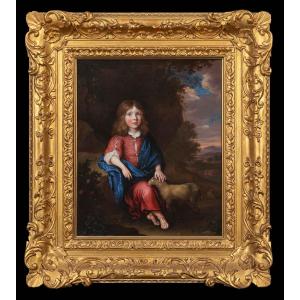


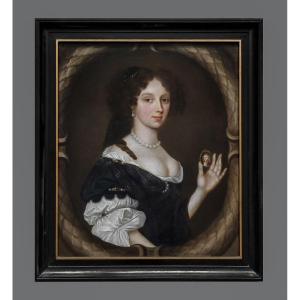
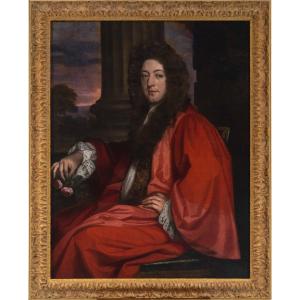

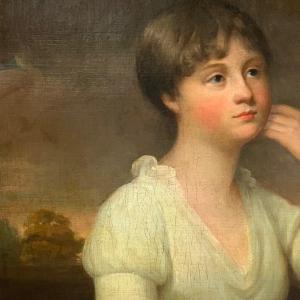
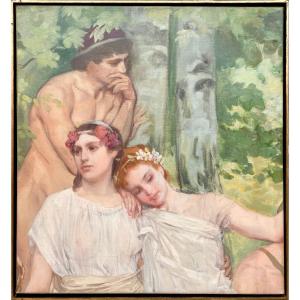
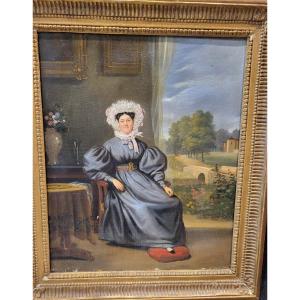

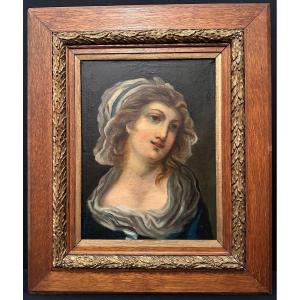




 Le Magazine
Le Magazine Rivista Artiquariato
Rivista Artiquariato TRÉSORS magazine
TRÉSORS magazine





